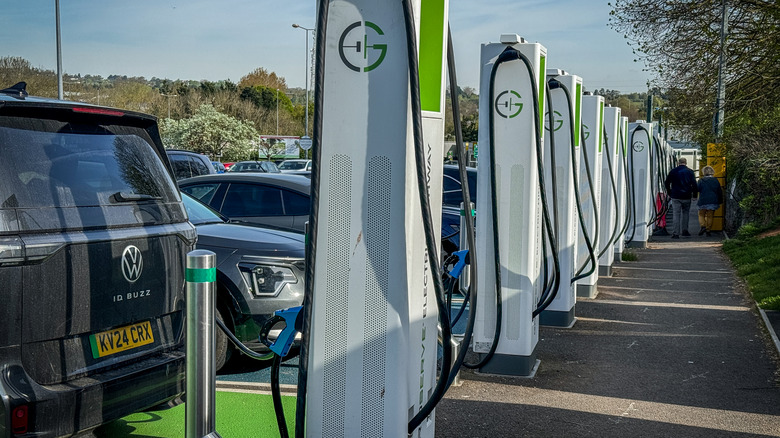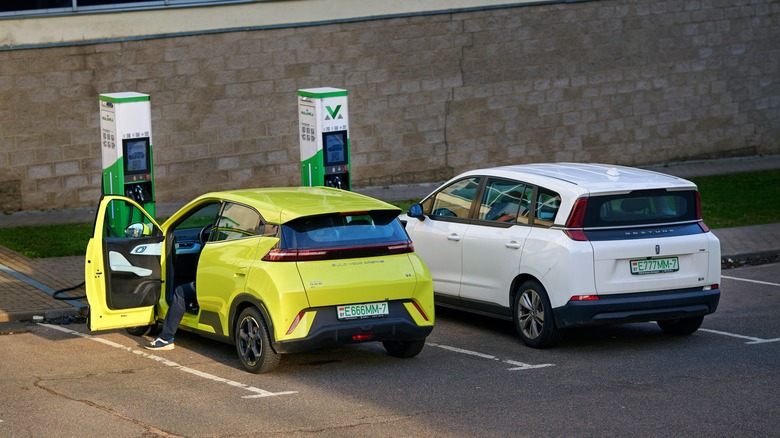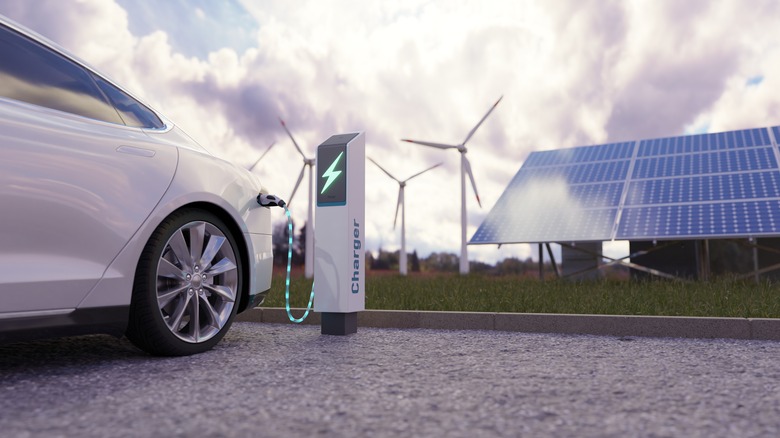Why 2024 Will Be The Year Of The 'EV U-Turn,' According To This Expert
Electric vehicle sales have surged in recent years, with more than 1.6 million sold in 2023 worldwide, according to Market Watch. That was up 60% from the year before, and internal combustion vehicles are scheduled for bans in the European Union and 12 of the U.S. states by 2035. SlashGear has already chronicled some issues blocking the way to widespread acceptance of EVs, including insufficient charging infrastructure and high prices.
Even dealerships lack enough charging stations to keep their fleets charged, and as EVs become more common, the lack of on-the-road fast chargers will become more of an issue. One industry expert pointed out another set of infrastructure-related issues that could reverse the uptick in EV sales as soon as this year. Dr. Laine Mears, the Automotive Manufacturing Chair at Clemson University's International Center for Automotive Research, told SlashGear he considers the lack of green recharging stations to be an impediment to EV adoption. "It will take time for the market to transition to more sustainable power," Dr. Mears said. "This will need to be driven by infrastructure investment, transitional technologies, and attitude change — all things that may take a lot longer than expected."
EVs are still more expensive than ICE-powered cars
In the United States, the average $50,000 EV sale results in a loss of about $6,000 for the manufacturer, according to a report from the Boston Consulting Group. In January, Car Edge cited the average price of a new EV at $55,353 — which was nearly $8,000 more than the average vehicle. Cheaper, short-range EVs like the BYD Seagull are popular in China, but import restrictions prevent those cars from coming to American markets.
Birmingham Business School Professor David Bailey told Forbes he thinks there are two main issues blocking the widespread adoption of electric vehicles. "The charging infrastructure isn't being built out fast enough, "he said. "[And] while battery costs and EV prices are coming down, they are still above ICE cars and subsidies have been withdrawn too quickly." Benjamin Kibies, a senior automotive analyst for Dataforce of Germany, agreed with Dr. Mears that an insufficient charging infrastructure is a problem. "Building a highway network of Superchargers is one thing but making recharging points accessible for everyone quite another," he said. "At the moment, EVs are a great thing for house owners like me, who can install their own wall box. That is a large improvement in quality of life. On the other hand, if you live in a flat, recharging your EV is a pain."
Most EVs are charged using fossil fuel power
Keeping your EV charged enough to get you to and from important destinations is an obvious issue, but there are lingering environmental concerns that could slow large-scale EV adoption as well. They mostly center around the manufacturing and disposal of lithium-ion batteries, but another issue is the source of the power going to charging stations. According to Kathryn Ezeoha of ArcGIS Online, only about 11% of the electricity generated for the U.S. power grid comes from sustainable sources like wind and solar, meaning your EV may not be as environmentally friendly as you think.
She noted that while internal combustion engines' tailpipe emissions are harmful, "electric powered cars that receive their electricity from fossil fuels are responsible for releasing greenhouse gases at the 'front end,'" meaning the point at which their batteries are charged. This hidden issue seems to be less critical than the lack of charging infrastructure, particularly in rural areas, but could become a concern for truly environmentally conscious drivers. A best-case scenario involves the development of a more eco-friendly power grid that relies more heavily on solar and wind power, but that will take time to develop and implement on the scale where it will make much difference.


